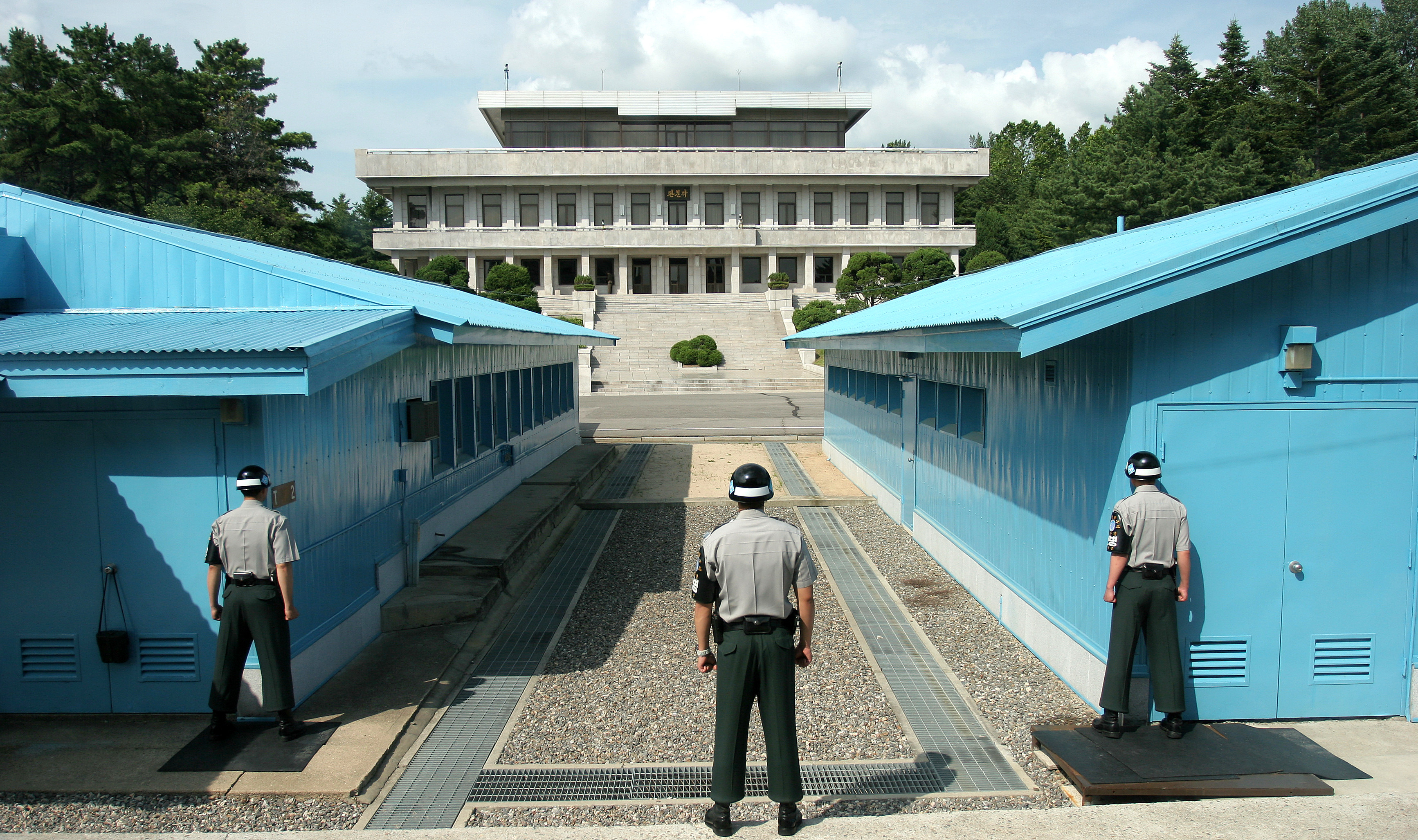
[by In Hwa M]
Talks began in the demilitarized zone, as North and South Korea worked to ease tensions that have risen recently. There has been an exchange of artillery fire between the two Koreas along with many more threats (and demands) coming from North Korea.
The meeting took place at the Panmunjom truce village in the DMZ, beginning on Saturday, August 22. Many North Korean veterans made an appearance, including Hwang Pong So, Kim Jong Un’s deputy and political director of North Korea’s army, and Kim Yang Gon, who has negotiated with South Korea since Kim Jong Il’s time.
“[Hwang] can speak with the authority of Kim Jong Un. This is as high as you can go. He has the longest history, best idea of Kim Jong Un, and what he is hoping to get out of it,” Professor David Kang of the University of Southern California told CNN. The appearance of these important men is a sign that North Korea wants serious negotiation.
South Korean Kim Kwan-jin, national security adviser to the president, and Hong Yong-pyo, the Unification Minister, both attended the meeting.
There is distrust emanating from both sides, and the representatives are “under big pressure to get something out of this,” said Jeon Young-sun, a University professor in Seoul. The two countries’ representatives discussed ways to ease their bitter relationship, and improve ties.
Even as the rivals began to talk, they were on maximum alert. North Korea is currently deploying double the normal amount of artillery on their front line, and around 50 of their submarines are known to be away from their bases, according to South Korea’s defence ministry.
“It seems that the North is pursuing dialogue on one side and preparing for battle on another side,” said Tong-hyung Kim, a South Korean journalist.
Meanwhile, 28,500 US troops are based in South Korea, and are conducting joint military exercises with the South.
The talks ended on August 23, and the world awaits the result from South Korea’s government.
This meeting took place following a few weeks of hostilities. The crisis began when two South Korean soldiers were seriously wounded by landmine explosions in the DMZ. The South claims the mines were planted by the North, but the North denied this accusation. A few days later, the South started to play propaganda against the North, from 11 loudspeakers placed along the border. These broadcasts included South Korean music and news, continuing a practice that originally ended in 2004.
On Thursday August 20, the Koreas exchanged artillery fire, and almost brought themselves into conflict (technically the two nations have been at war for 65 years now). Kim Jong Un ordered his troops into a “fully armed, wartime state”. North Korea demanded its neighbor to stop the “provocations” within 48 hours. If these demands are not met, “military counteraction will be inevitable,” said North Korean U.N. Ambassador. The South continued the broadcasts, and their troops stood at maximum alert.
The 48 hour deadline passed on Saturday, and nothing has been reported. The world can only see this as another attention-seeking act by North Korea. The tensions are high, but North Korea has a history of not keeping promises, and South Koreans seem to be unbothered by these threats. Still, South Koreans living near the border were evacuated when the threats were made.
“We’ve been here several times, but that doesn’t mean it isn’t still dangerous,” said Yoo Ho-yeol, a Korea University professor.